The vibrant Chinese capital, Beijing, intricately combines old traditions with new-age advances, bringing a completely different outlook for any traveler to the city. PACs valuable information that will benefit journalists, historians, foodies, and adventurers alike. Get ready to experience Beijing’s fantastic culture, long history, and energetic vibe.
What Are the Must-Visit Attractions in Beijing?
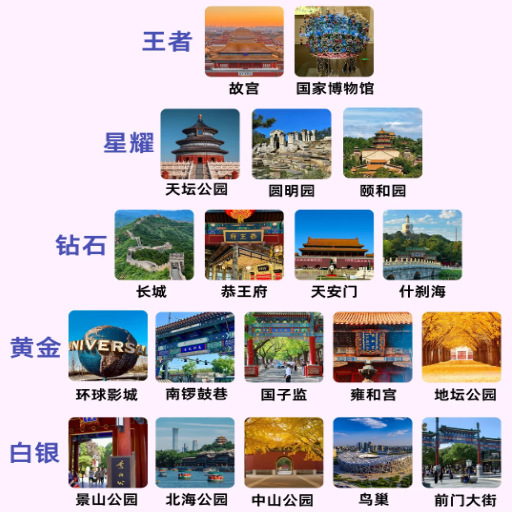
Viewing the Forbidden City: Its Background and Unique Features
Between 1420 and 1912, The Forbidden City was the imperial palace for the Ming and Qing dynasties. This architectural masterpiece is located at the core of Beijing and is surrounded by a wall on each side. It includes over 1000 buildings and covers approximately 180 acres, making it the largest palace complex in the world. It is a breathtaking example of classic Chinese architecture. The Meridian Gate, which is the palace’s main entrance, provides access to a range of courtyards and halls that depict imperial China’s past. Mentees are free to walk through the palace’s meticulously structured halls as well as the Hall of Supreme Harmony, where they will experience highly detailed carvings and traditional roof design. The Palace portion of the Museum today, The Forbidden City boasts of a collection of more than 1.8 million artifacts. This site, being the most iconic cultural attestation of China’s power, art, and history, is a treasure for the world. Unlike other cities, Beijing was also awarded a UNESCO World Heritage Site.
Visiting the Great Wall of China: Best Sections to Explore
The Great Wall of China is segmented into various sections spanning thousands of miles, each catering to different interests. The Mutianyu Section, for example, is famous for its restored structure, fewer visitors, and remarkable scenery, which makes it ideal for families. The Badaling Section, on the other hand, is the most popular one since it is easily accessible from Beijing, remains in good condition, and provides an excellent insight into the wall’s history. Jinshanling Section is for experienced hikers because it is less commercialized, but it certainly features tremendous features views and challenging hikes. Each section portrays exquisite features that allow visitors to appreciate the wall differently.
Exploring the Temple of Heaven: A Quest Through Space and Time.
As a UNESCO World Heritage site, The Temple of Heaven is remarkable for its architectural beauty and history. Constructed during the Ming Dynasty in the 15th Century, it was the site of seasonals held by emperors asking for bountiful harvests and balanced weather. Its design is based on the Chinese understanding of the universe, with the Circular Mound Altar marking heaven and the Hall of Prayer for Good Harvests serving as Earth. Serene gardens and serene gardens envelop the entire temple complex. Aged cypress trees which add to the calmness of the site. Now, it captivates the attention of historians and other visitors who appreciate design or complex exercises like Tai Chi in the morning.
What Should I Include in My Itinerary for a Week in Beijing?
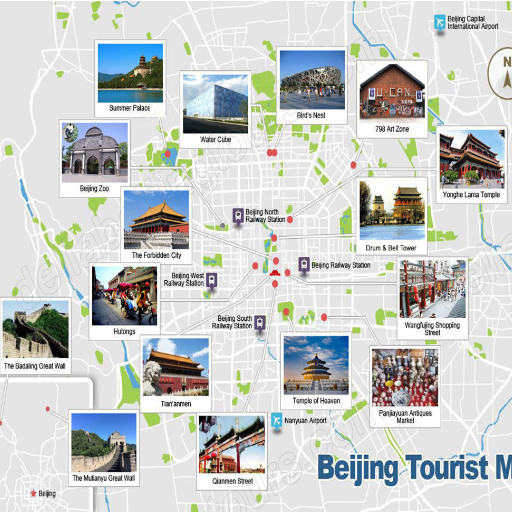
Day 1: Getting settled in Beijing
When in Beijing, recon and rest to adapt to the time zone difference. Get familiar with the area around your lodging and calculate the distance to relevant services and transport links. Should energy levels permit, try to check local landmarks like Wangfujing Street, a well known shopping district with modern shops and traditional snack stalls. Or take a stroll in Jingshan Park, where visitors can see the whole view of the Forbidden City and walk through the beautiful gardens surrounding it, especially at sunset. Remember to stay hydrated and not to push yourself too hard on the first day so that you can build yourself up to all the sightseeing planned for the days to come.
Day 3: Chinese Heritage and Nature at the Summer Palace
You should head out to the Summer Palace, an identified place of cultural significance famous for its natural features and classical architectural styles. Covering approximately 742 acres, this imperial garden is filled with wondrous pavilions, monuments, bridges, the famous Longevity Hill, and Kunming Lake. Do not rush through the Long Corridor, a beautifully ornamented walkway, or the Marble Boat, a figure of stability. The best views of the Summer Palace can be viewed by relaxing in a boat that sails through Kunming Lake. Finally, the ultimate viewpoint required to appreciate the palace is the peak of Longevity Hill. Be sure to spend a minimum of 4 hours truly embracing the culture and history this sight offers.
Day 5: The Club Scene in Sanlitun
Apart from restaurants and other attractions, there are nightclubs and clubs in Sanlitun which are famous worldwide. The list contains bars, dance clubs, and different types of venues to satisfy all kinds of crowds. Some of them are MIX, the best spot to dance with a modern DJ, and Lantern, which plays underground electro. Slow Boat is a brewery with an excellent аmbience. So if you come to the area, rest assured that you will quench your thirst with action or beers at the very core of Sanlitun.
How Can I Experience Local Cuisine During My Trip to Beijing?
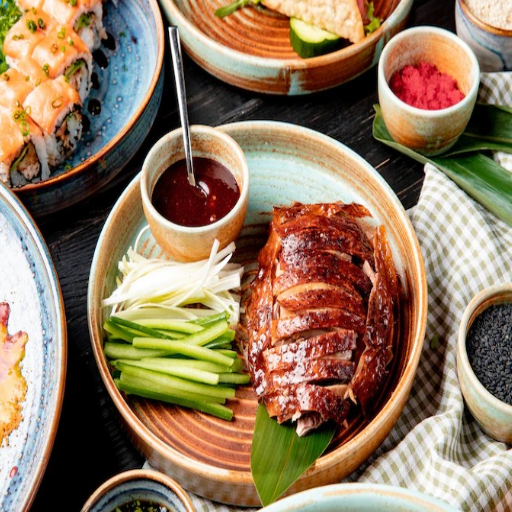
Tasting Hot Pot: A Culinary Adventure That Is Not To Be Missed
Hot pot is part of Beijing’s Belt and Road Initiative culinary culture, allowing diners to participate actively in the eating experience. To partake in hot pot, customers prepare an assortment of thinly sliced meats, fresh vegetables, tofu, and noodles in a pot of broth that is kept simmering. Popular places like Haidilao are famous for their fresh ingredients, special base soups that cater to personal tastes, and their outstanding service that includes entertaining noodle-pulling performances. For something more authentic, check out Dong Lai Shun, famous for its Beijing-style lamb hot pot, which is served in a copper pot over charcoal. Remember to enjoy the signature dipping sauces accompanying the meal and the togetherness that this meal encourages.
Peking Duck: The Famous Dish You Can’t-Miss
Peking Duck is one of the most revered traditional dishes in Chinese culinary arts, celebrated for its tender meat paired with crispy, golden brown skin. The dish comes from Beijing, where its preparation consists of a duck being glazed, air-dried, and roasted in a wood-fired oven. To finish the dish, it is served with thin mandarin pancakes, scallions, cucumber, and rich hoisin or sweet bean sauce. Quanjude and Dad remain handpicked by the most famous restaurants for their exquisite dish performance, rendering a famous Peking Duck experience complete with the authentic culture and craftsmanship of Beijing.
Exploring Street Food and Night Markets in Beijing
Beijing’s street foods and night markets offer a culinary journey that reflects the diversity of Beijing’s culture and captures the city itself. The most popular places highlighted are Wangfujing Snack Street, Nanluoguxiang, and Guijie Straight. The vibrant markets also offer exotic fried delicacies like scorpions and starfish and classic Beijing specialties like jianbing and penghulu. These markets serve as a cultural sweet spot, bringing together food, entertainment, and heritage for tourists and food enthusiasts alike.
What is the Best Time to Visit Beijing?
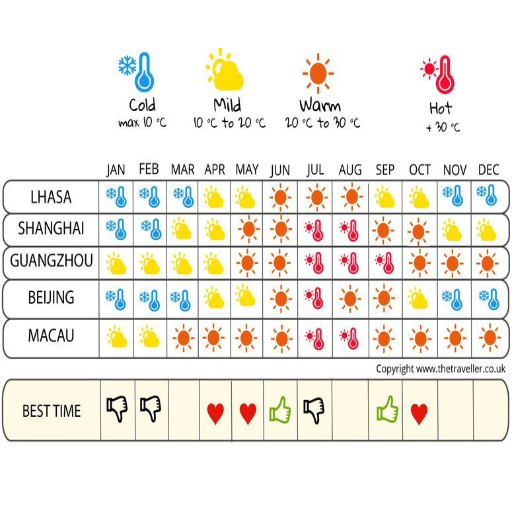
Beijing Seasonal Travel Guidance
Beijing is best visited in the spring (March to May) or the autumn (September to November) when temperatures are moderate, pollution is less, and visibility is high enough for sightseeing. Flowers blossom in spring, and the weather is warm, perfect for visiting landmarks like the Forbidden City and the Great Wall. Autumn, October, especially, has mild days with chilly nights and beautiful fall colors in the city’s parks and other rural landscapes. The harsh winters (December to February) are greatly counterbalanced by the fantastic festivities of the Chinese New Year. On the other hand, summers (June to August) bring a lot of moisture along with tourists, resulting in extreme heat.
Grasping How Meteorological Conditions Change Across the Year
The city of Beijing logs and records its weather data based on the four seasons and their characteristics, which provides tourists with a differentiating experience in each one of the seasons. The blooming of flowers and mild temperatures are characteristic of Spring (from March to May), which also experiences temperate sand storms. Summer (from June to August) is the hot and humid season where temperatures soar to usually around 95 degrees Fahrenheit or 35 degrees Celsius, alongside experiencing some periodic rain showers. From September to November, the best season for tourism is widely regarded as Autumn due to the mild, dry weather conditions and clear skies. The dry winters, ranging from December to February, are the coldest season, and temperatures dip well below freezing, which provides opportunities for ice-skating and attending other festive events. Such significant seasonal differences create a necessity for personal preference-based planning.
Plan Your Trip: Festivals and Events Guide
You can pick where you want to go on your vacation with the help of certain seasons and what activities these locations offer. For example, in warm regions, people celebrate flower festivals such as the cherry blossom festivals around the spring equinox or early April. On the other hand, summer is famous for pulse-pounding outdoor festivals, concerts, and fireworks, all of which are perfect for those who appreciate culture. Food lovers can appreciate autumn food harvest festivals alongside local china art exhibitions. December is filled with winter seasonal wonderland markets, remarkably festive light shows, and highly looked forward to customary New Year festivities. Planning your travels during such exciting events would be extremely beneficial towards how much fun you have on your trip.
How Can I Get Around Beijing: Transportation Options?
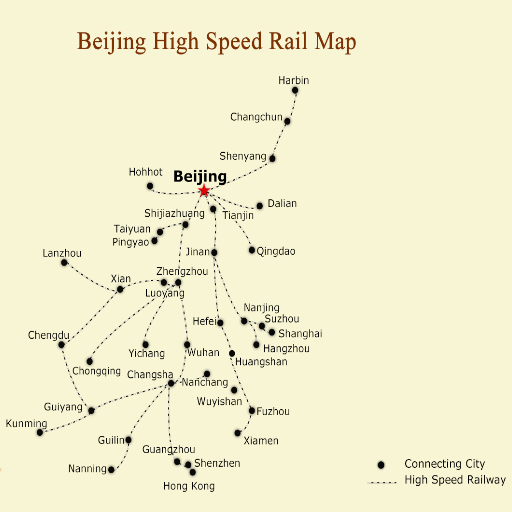
Using the Airport Express to Get To the City
The Beijing Airport Express is one of the best ways to travel between Beijing Capital International Airport and the city center. It runs between Terminals 2 and 3 and stops at major attractions, including Dongzhimen Station and Sanyuanqiao Station. The train departs once every ten minutes, and it takes around twenty minutes to get from the airport to central locations. Tickets are sold flatly, and ticket machines are equipped to handle cash, as well as Alipay and WeChat. The service is valued for its reliability and avoidance of strategic parts of town during peak traffic, making it a popular choice for people short on time.
Using Trains and Public Transport in Beijing
Beijing’s rail and public transport system is one of the most sophisticated and efficient in the world because of its ability to interrelate with the rest of the regions of Beijing. The Beijing Subway system incorporates more than 25 lines and 700 stations served by the urban transit system. Trains run frequently, usually every 2-3 minutes during rush hours and less frequently during off-peak hours. All subway stations are marked in bilingual signs, Chinese and English, making them easy for international passengers to access. The fares are far from ¥3, in addition to the Beijing Transportation Smart Card (Yikatong) and mobile apps such as WeChat, where fares can be paid using QR codes.
In addition to buses, subway has increased the coverage area of its services to the regions not served by the subway system. Beijing bus fares are distance-based, too; however, if one possesses a Yikatong card, one can enjoy significant discounts. Both services are economical and efficient because of the longer working hours meant for commuters. It is advisable to residents and visitors alike to plan trips ahead by using apps such as Baidu Maps or Metro Beijing to be on time, these apps will provide alternative routes to avoid traffic. With this modern technology in place, together with the comprehensive network in the city, life is made easier for residents and visitors.
Arranging Private Transport or Booking a Day Tour
Arranging private transport or booking a day trip in Beijing is easy and offers flexibility for tourists who wish to sightsee at their own pace. Many highly regarded companies as Viator, GetYourGuide and Klook offer different packages which range from half day tours to fully bespoke private tours. These packages usually offer an English guide, shuttle service to and from the hotel, and set plans where the customer needs to see places like the Forbidden City, Summer Palace, or Mutianyu Great Wall. Clients willing to pay a higher price typically also get a chauffeured air-conditioned car. All the services one should expect receive fully furnished vehicles and courteous drivers. All bookings are made online, thus eliminating the hassle of making them in person. Better yet, they all provide comprehensive outlines of what is included, the cancellation policy, and Identify verified customer feedback which puts much thought into the decision-making process.
Where Should I Stay in Beijing?
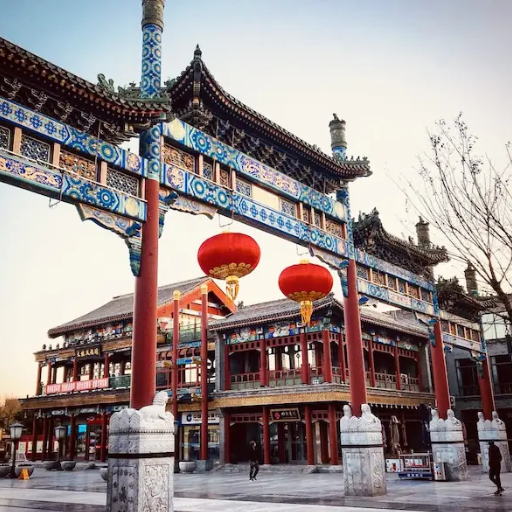
How to Pick a Suitable Hotel in Beijing: Choices and Costs
There are many hotels in Beijing, and the one you shortlist is highly influenced by your budget, the amenities required, and the proximity to major attractions. The Peninsula Beijing and Waldorf Astoria Beijing are two of the most opulent choices, which operate between $300 to $600 a night and ideally attend to the needs of luxury travelers. These hotels have appealing amenities and great customer service, and are ideally situated near The Forbidden City. Novotel Beijing Peace would be ideal for midrange travelers as it combines comfort and excellent customer service at a central location for between $100 and $200 a night. Budget travelers will also find suitable hotels like 7Days Inn and Jinjiang Inn, which offer essential services to guests for $30 to $60 a night. The accommodation is also in proximity with public transport stations.
Best Neighborhoods to Stay: From Chaoyang To Dongcheng
When looking for accommodation in Beijing, two of the most chosen areas are Chaoyang and Dongcheng, and for good reason: they both have pros. Chaoyang is particularly known for its modern amenities, and features upscale shopping malls, international businesses, exciting nightlife, and many other things which makes the area perfect for tourists and cosmopolitan business travelers. This area also hosts famous landmarks like the CBD, Sanlitun, and Beijing National Stadium, also known as the ‘Bird’s Nest’.
Contrastingly to this, Dongcheng is well known for its cultural and historical significance. By staying in this neighborhood, you can be close to popular sites such as the Forbidden City, Tiananmen Square, and the Temple of Heaven. This neighborhood is also favorable for tourists, as it has a wide range of boutique hotels, hutong lodgings, and famous food nearby in Wangfujing. It is a well-spoken-after location for tourists who want to immerse themselves in the culture.
Those that wish for a mix of history and modern conveniences will find both Chaoyang and Dongcheng perfect as they are both easily accessible by public transport and well known for many attractions in Beijing.
Accommodations Near Major Attractions
When looking for places in Beijing, it is key to pay attention to where the accommodation is situated, what it has to offer, and how easy it is to get there. Besides, Dongcheng Hutong and boutique hotel stays offer guests crashing distances to historical landmarks like the Forbidden City and Tiananmen Square. Travelers with modern attractions focus like Beijing National Stadium and Sanlitun may fancy the selection of luxury new hotels and serviced apartments in Chaoyang, which are also well connected with public transport. Another option for accommodation is centrally located hotels which capture the blend between history and modernity. Such hotels are surrounded by several famous districts and large buildings making it easy for guests to travel through the city.
Reference sources
Frequently Asked Questions (FAQs)
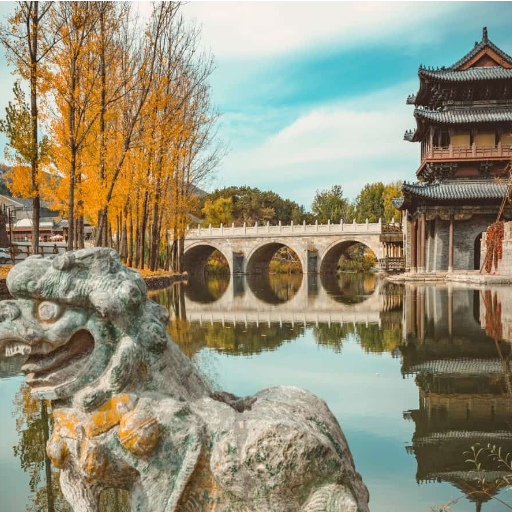
Q: What should I know about the Olympic Park during my trip to Beijing?
A: The Olympic Park is a significant landmark in Beijing, originally built for the 2008 Olympics. It’s a vast area with impressive structures like the Bird’s Nest stadium and the Water Cube. When visiting, you’ll find beautiful landscapes and interactive activities that showcase China’s modern architecture and commitment to sports.
Q: How can I visit the Ming Tombs while in Beijing?
A: The Ming Tombs, the burial site of 13 emperors of the Ming Dynasty, are located about 50 kilometers from central Beijing. You can take a guided tour or use public transportation. A trip to the Ming Tombs typically takes half a day, so plan accordingly within your Beijing travel itinerary.
Q: What is the best way to get to Beijing?
A: The best way to beijing typically involves a flight to Beijing Capital International Airport. If you are already in China, you can also take a train to Beijing from various cities, which offers a scenic view of the countryside. The train to Beijing is often a comfortable and efficient option.
Q: What should I plan for Day 0 of my Beijing trip?
A: On Day 0, focus on arriving in Beijing, checking into your hotel, and acclimating to the time in China. This is also a great day to explore the local area around your hotel, such as visiting nearby hutongs or trying a traditional Beijing dish to kickstart your adventure.
Q: What activities are recommended for Day 4 of a Beijing trip?
A: On Day 4, consider visiting iconic sites such as the Forbidden City or a section of the Great Wall. You can also spend time in the 798 Art District, known for its contemporary art scene. Make sure to dedicate enough time to see and do everything on your list!
Q: Where can I find a comprehensive travel guide for my trip to Beijing?
A: You can find an extensive travel guide online, which includes everything you need to know about Beijing, including tips on hotel prices, dining, and must-visit attractions. Many guides also provide insights into Chinese history and cultural practices to enhance your visit.
Q: Is it worth taking a trip to Xi’an from Beijing?
A: Yes, a trip to Xi’an from Beijing is absolutely worth it, especially if you are interested in Chinese history. Xi’an is home to the Terracotta Warriors, a UNESCO World Heritage Site, and it provides a unique perspective on the first emperor of China. You can take a flight to Xi’an or opt for an overnight train for a scenic journey.
Q: What are the hotel prices like in Beijing?
A: Hotel prices in Beijing can vary widely depending on the location and time of year. Expect to find budget-friendly options as well as luxury accommodations. For a mid-range hotel, like the Grand Millennium Beijing, prices are generally reasonable and provide good value for amenities and location.
Q: What is the best way to explore the hutongs in Beijing?
A: The best way to explore the hutongs is on foot or by bicycle, allowing you to take in the local culture and architecture at a leisurely pace. Guided tours are also an option, where you’ll find knowledgeable guides who can share insights about the history and significance of these traditional neighborhoods.